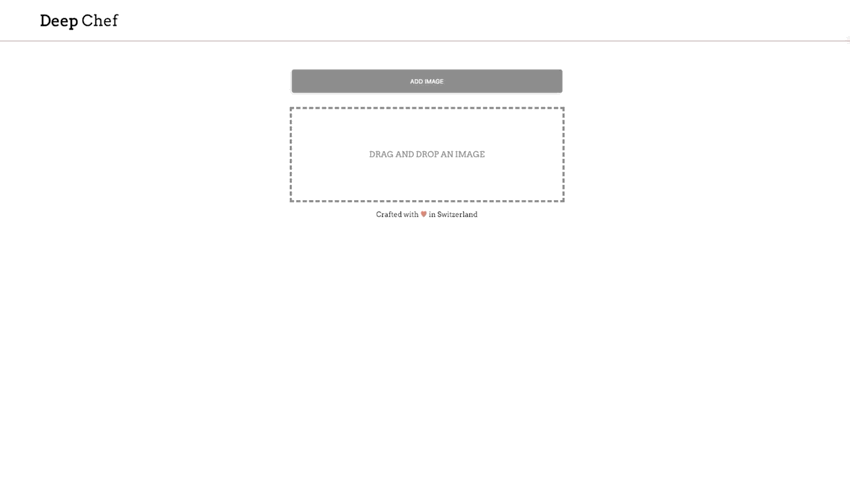Update: The Blog Article is now out. Visit this tutorial on Medium for further information!
For example usage visit this Jupyter Notebook: Core Algorithm
Maturaarbeit 2018: This work makes usage of deep convolutional neural networks with Keras to classify images into 230 food categories and to output a matching recipe. The dataset contains >400'000 food images and >300'000 recipes from chefkoch.de.
Hardly any other area affects human well-being to a similar extent as nutrition. Every day countless of food pictures are published by users on social networks; from the first home-made cake to the top Michelin dish, the joy of the world is shared with you in case a dish is successful. It is a fact that no matter how different you may be from each other, good food is appreciated by everyone. Advances in the classification or object recognition of individual cooking ingredients are sparse. The problem is that there are almost no public edited records available.
The code (Jupyter notebooks) is provided with numerous comments in German. The process looks like this:
1│── Data preparation
│ └── Clearing data
│ └── Data augmentation
2│── Data analysis and Visualization, Split data (Train, Valid, Test)
3│── First attempts with simple ML models
│ └── Nearest Neighbor classifier (kNN)
│ └── k-Means Clustering
│ └── Support Vector Machine
4│── Transfer Learning: Training pre-trained CNN (Convolutional Neural Network)
│ └── AlexNet, VGG, ResNet, GoogLeNet
5│── Training your own CNN
│ └── Optimization
6│── Visualize results
7└── Create a web application (DeepChef) (work in progress)
The exact solution is the following:
-
For every recipe W it has K number of pictures. For each of the images feature vectors are extracted from a pre-trained Convolution Neural Network trained on 1000 categories in the ILSVRC 2014 image recognition competition with millions of images. The feature vectors form an internal representation of the image in the last fully connected layer before the 1000-category Softmax Layer which was removed beforehand. These feature vectors are then dimensionally reduced by PCA (Principal Component Analysis) from an N x 4096 matrix to an N x V matrix, where V < 4096. As a result, one chooses the top 5 images with the smallest Euclidean distance to the input image (Approximate nearest neighbor), i.e. the top 5 optical, just from the picture information, similar pictures to the Input image.
-
Furthermore, a CNN is trained with C number of categories with pictures of W recipes. C has been determined dynamically using topic modeling and semantic analysis of recipe names. As a result one gets for each category a probability to which the input image could belong.
-
The top 5 categories of the input image of the CNN (2.) are compared with the categories of the top 5 optically similar images (1.)
This work deals with the problem of automated recognition of a photographed cooking dish and the subsequent output of the appropriate recipe. The distinction between the difficulty of the chosen problem and previous supervised classification problems is that there are large overlaps in food dishes, as dishes of different categories may look very similar only in terms of image information. The task is subdivided into smaller areas according to the motto divide and conquer: According to the current state, the largest German-language dataset of more than 300'000 recipes will be presented, with a newly developed method, according to the author's knowledge, presented by the combination of object recognition or cooking court recognition using Convolutional Neural Networks (short CNN) and the search of the nearest neighbor of the input image (Next-Neighbor Classification) in a record of over 400,000 images. This combination helps to find the correct recipe more likely, as the top-5 categories of the CNN are compared to the next-neighbor category.
The result is the product DeepChef. The web application (coming soon) expects a meal picture as input. As a result, you get the associated recipes.


